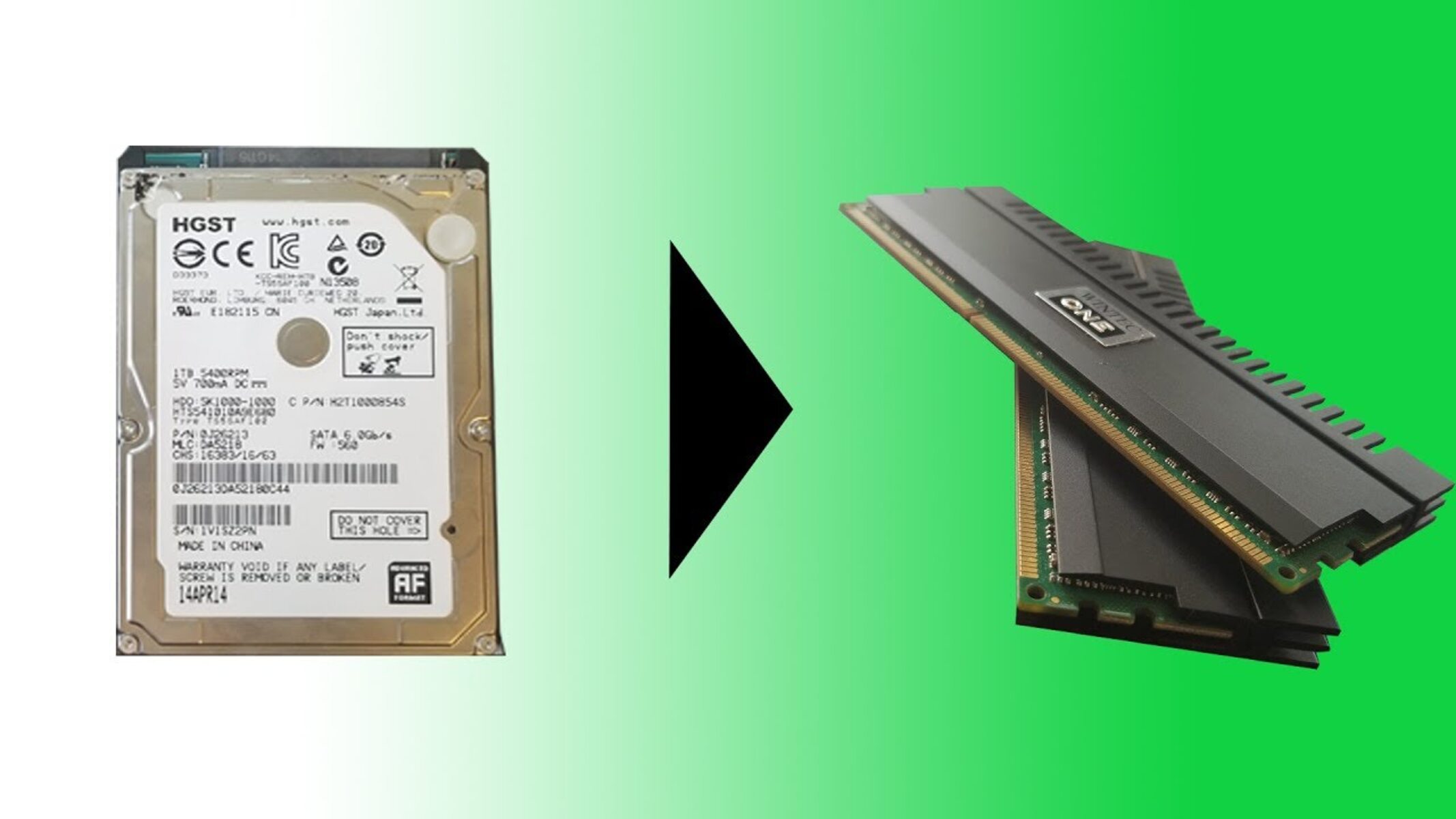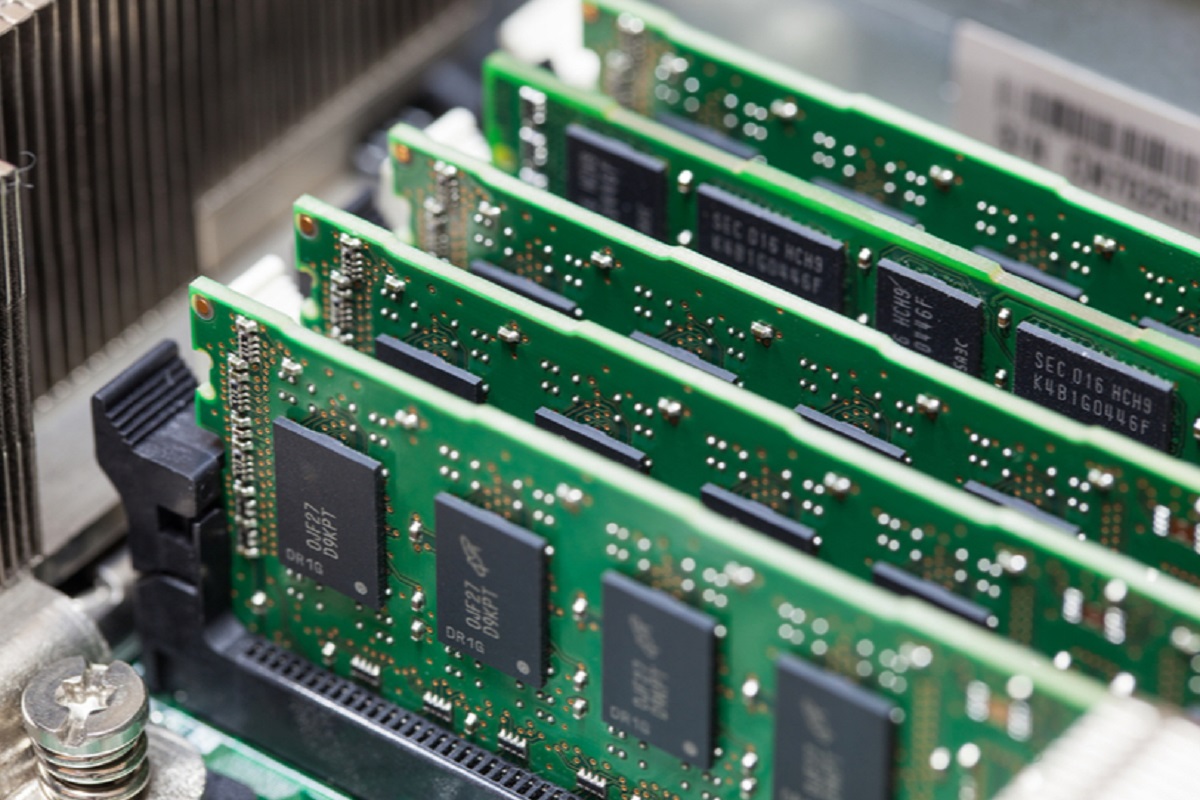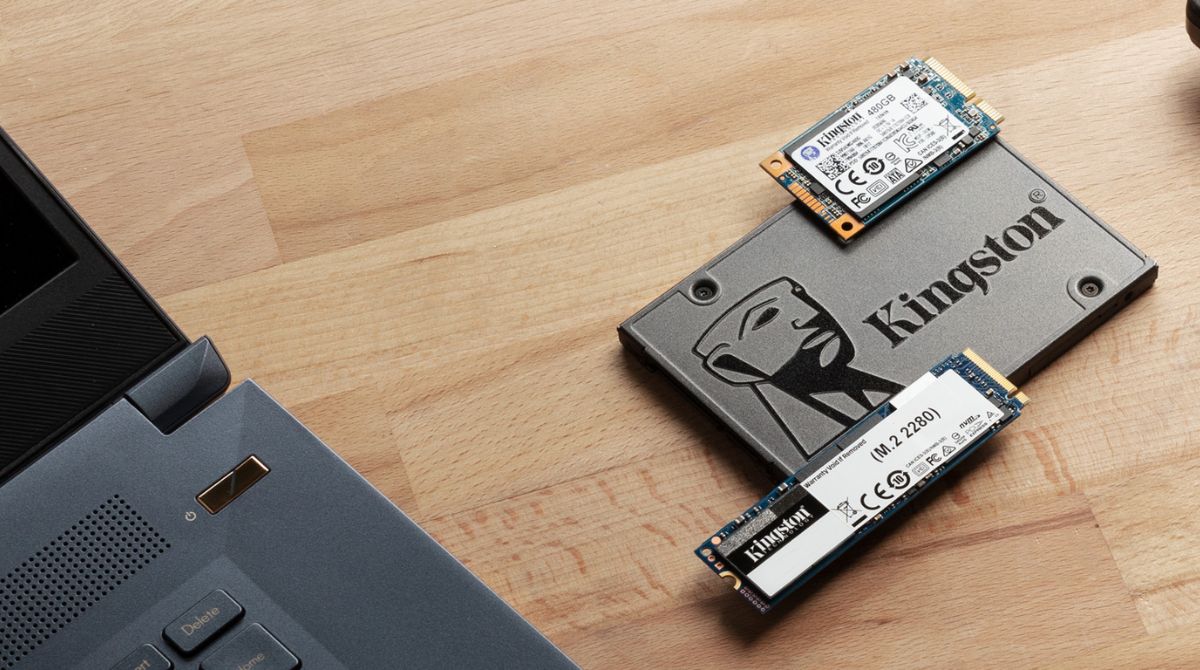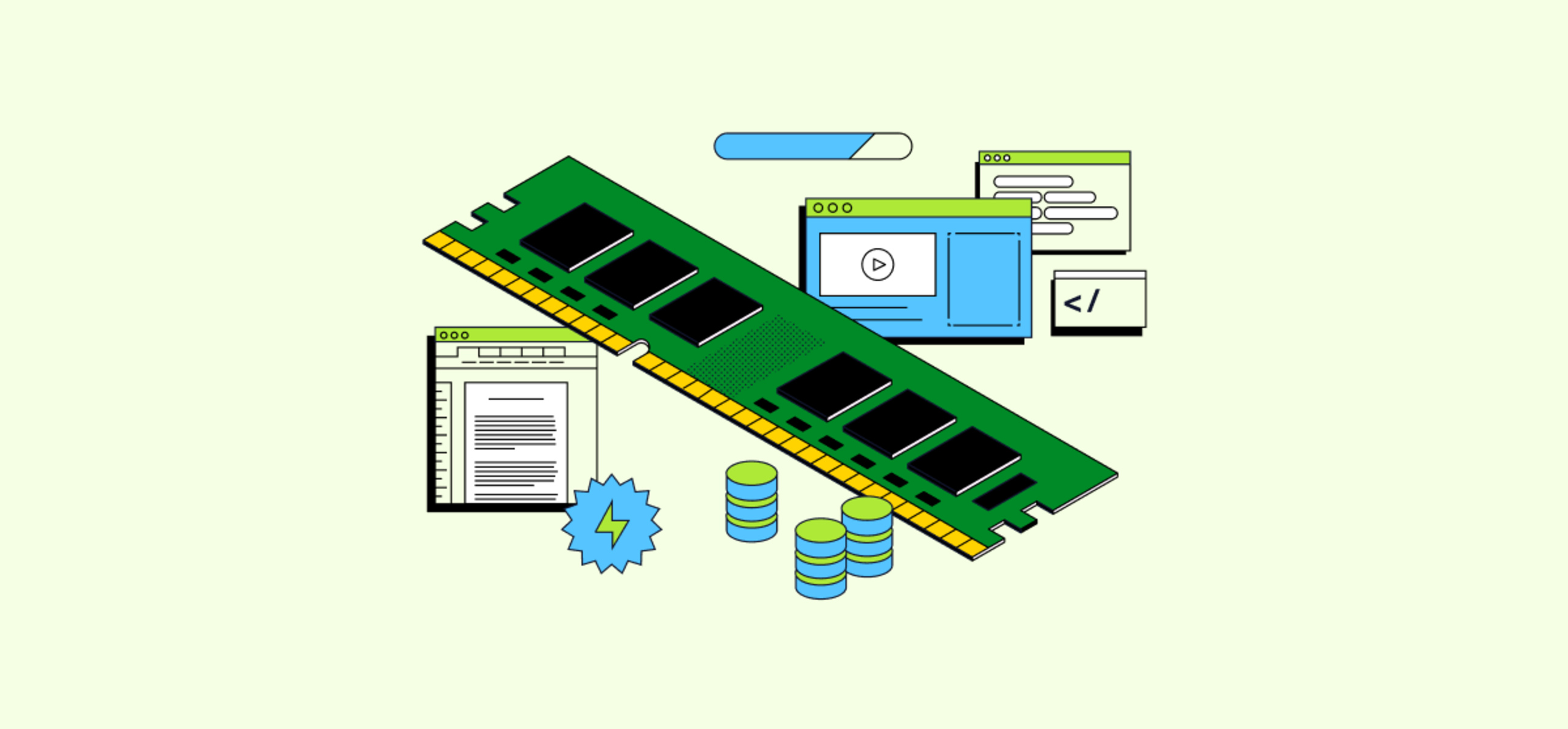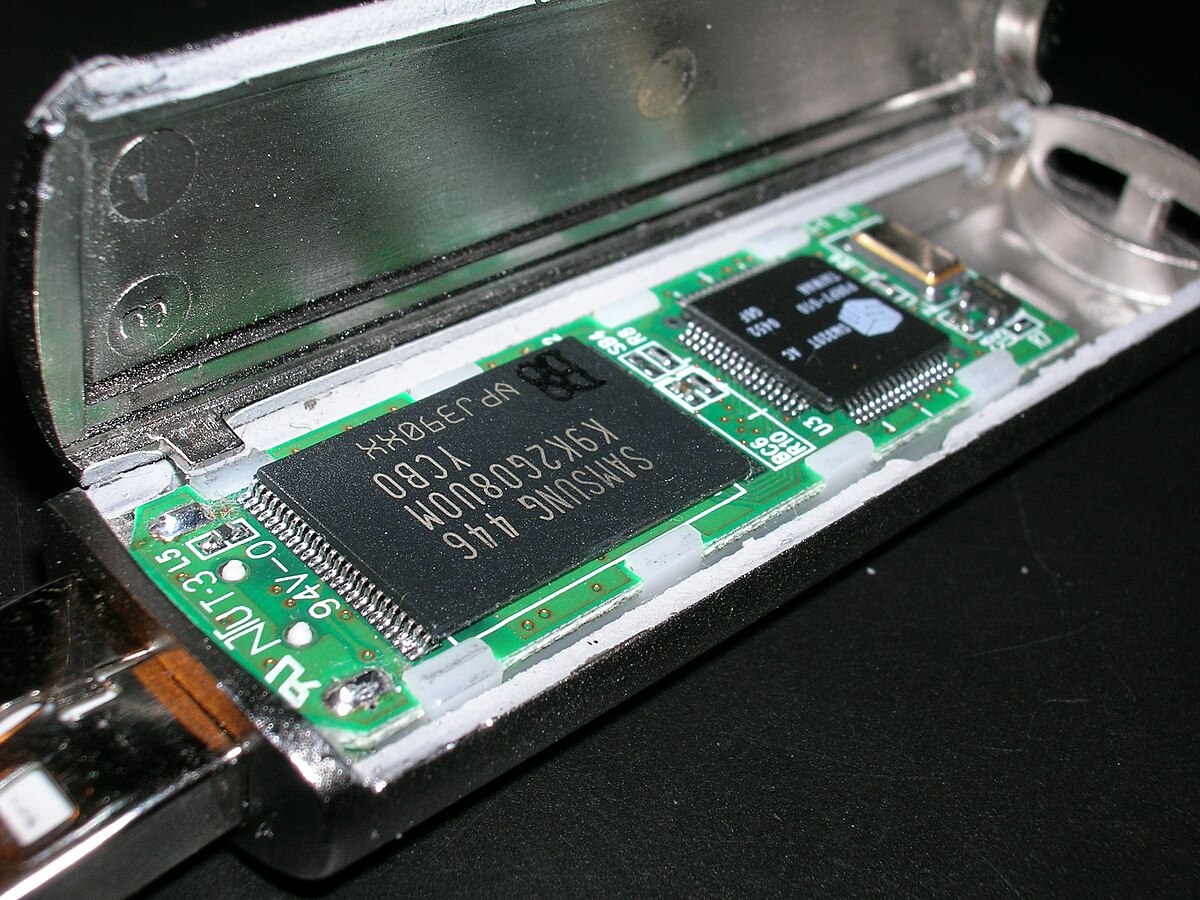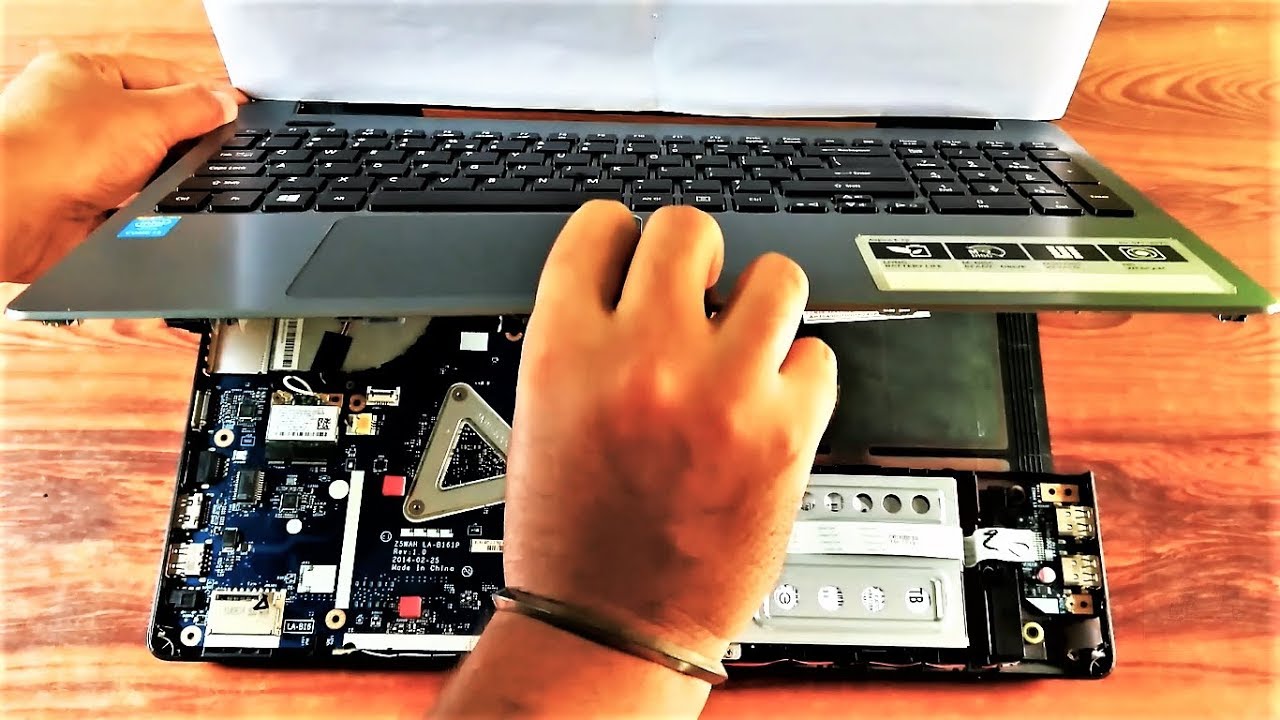Introduction
Welcome to the world of computer memory, where the performance of your system heavily depends on the type and amount of memory it has. When it comes to memory, most people are familiar with RAM (Random Access Memory), which plays a crucial role in determining the speed and efficiency of a computer. But have you ever wondered if there’s a way to turn a hard drive, typically used for storage, into RAM? In this article, we will explore this intriguing topic and shed light on whether it’s possible to utilize a hard drive as RAM.
RAM is a form of volatile memory that stores data that is actively being used by the computer. It allows the processor to quickly access and manipulate data, significantly improving the overall performance of the system. On the other hand, a hard drive is a non-volatile storage medium that stores data for the long term, even when the system is powered off. While RAM is faster and more expensive than a hard drive, the latter has a much larger storage capacity.
Traditionally, RAM has always been a critical component in determining the speed and responsiveness of your computer. Insufficient RAM can lead to slow performance, lags, and frequent crashes, especially when running heavy applications or multitasking. This has led many enthusiasts and tech-savvy individuals to explore alternative methods of boosting system performance, including the possibility of utilizing a hard drive as an extension of RAM.
Before we delve into the intricacies of using a hard drive as RAM, it’s important to understand the fundamental differences between RAM and a hard drive. While both serve the purpose of storing data, their functionalities and characteristics vary significantly. In the next section, we will explore these differences in more detail to clarify why a hard drive may not be a direct substitute for RAM.
What is RAM?
RAM, or Random Access Memory, is a crucial component of a computer’s memory system. It is a form of volatile memory, meaning that its contents are lost when the power is turned off. RAM serves as a temporary storage space that allows the computer to access and manipulate data quickly. Think of it as a workspace where the computer can store and retrieve information that it needs to process in real-time.
RAM plays a vital role in determining the performance and responsiveness of a computer. When you open an application or run a program, the operating system allocates a portion of the RAM to it. This allocated space allows the program to operate smoothly by storing and accessing data that it needs on the fly. The more RAM your computer has, the more data it can store, resulting in faster and more efficient computing.
RAM works on the principle of random access, which means that any location in the memory can be accessed directly, without having to go through the contents sequentially. This random access feature allows for faster data retrieval, making RAM much faster than other types of storage, such as hard drives or solid-state drives. This speed is essential for tasks that require frequent and quick access to data, like gaming, video editing, or running resource-intensive applications.
RAM comes in various types, such as DDR3, DDR4, and DDR5, with each generation offering improvements in speed and efficiency. The amount of RAM you have is measured in gigabytes (GB) or terabytes (TB). Common RAM sizes for personal computers range from 4GB to 32GB, although high-end systems can support much larger capacities.
It’s important to note that RAM is different from storage devices like hard drives or solid-state drives (SSDs). While these storage devices store data for the long term, RAM is a temporary storage solution that only holds data while it’s actively being used by the computer. Once the power is turned off, the contents of RAM are erased, and the data is lost. This is why it’s crucial to save important files and documents to a more permanent storage medium, like a hard drive, to prevent data loss.
Now that we have a clear understanding of what RAM is and its role in a computer system, let’s explore the inner workings of a hard drive to understand why it is typically used for storage rather than functioning as RAM.
Understanding Hard Drives
Hard drives are one of the most common types of storage devices used in computers. They are non-volatile memory systems designed to store and retrieve data over a long period of time, even when the power is turned off. Unlike RAM, which provides fast and temporary storage, a hard drive offers larger storage capacity at a more affordable price.
A hard drive consists of one or more magnetic rotating platters that store data, along with read/write heads that access and modify the data. When you save a file or install a program on your computer, the data is written onto the magnetic surface of the platters. The read/write heads then locate and retrieve the data when needed. To access the data, the hard drive spins the platters at high speeds, typically ranging from 5,400 to 15,000 revolutions per minute (RPM).
Hard drives are available in different form factors, such as 3.5-inch or 2.5-inch drives, which correspond to the physical size of the drive. They also come with varying storage capacities, with common sizes ranging from 500GB to multiple terabytes (TB). The larger the capacity, the more data a hard drive can store.
While hard drives provide ample storage space, they are not as fast as RAM. Accessing data from a hard drive involves mechanical processes, such as spinning the platters and moving the read/write heads to the specific location on the disk where the data is stored. This mechanical nature introduces latency and slows down the data retrieval process compared to the near-instantaneous access of RAM.
In recent years, solid-state drives (SSDs) have gained popularity as an alternative to traditional hard drives. SSDs use flash memory instead of spinning platters, resulting in drastically faster data access speeds. However, SSDs are still not as fast as RAM and come at a higher cost per unit of storage compared to hard drives.
Given the characteristics of hard drives, including their mechanical nature and slower access times compared to RAM, it is important to understand that using a hard drive as RAM may not provide the same level of performance and speed as dedicated RAM modules. Nevertheless, there are ways to utilize a hard drive to improve system performance, as we will explore in the following sections.
Can a Hard Drive be Used as RAM?
The short answer is no, a hard drive cannot be directly used as RAM. While both serve the purpose of storing data, they have fundamental differences in their functionality and performance characteristics.
RAM is designed to provide fast and temporary storage for data that is actively being used by the computer. It offers high-speed access, allowing the processor to quickly retrieve and manipulate data. In contrast, a hard drive is intended for long-term storage, capable of holding large amounts of data even when the power is turned off. It operates at significantly slower speeds compared to RAM due to mechanical processes involved in accessing data, such as spinning platters and moving read/write heads.
Using a hard drive as RAM would involve utilizing it as an extension of the existing RAM, commonly referred to as virtual memory or a swap file. The operating system can use parts of the hard drive to simulate additional RAM when the physical RAM capacity is exceeded. However, this method is not as efficient as having dedicated RAM modules since the access times of the hard drive are significantly slower compared to RAM.
When the computer runs out of physical RAM, it starts using the hard drive as virtual memory. Data that is not actively being used is moved from RAM to the hard drive to free up space for the currently active data. When that data is needed again, it has to be fetched from the hard drive back into RAM, which leads to reduced performance due to the slower access times.
While employing a hard drive as virtual memory can be beneficial in situations where there is a shortage of physical RAM, it is important to note that the overall performance gain will not match that of upgrading the RAM itself. Investing in additional RAM modules or upgrading to higher-capacity ones will provide a significant boost in system performance as it allows for faster and more efficient data access.
It’s worth mentioning that technologies like SSDs have faster access times compared to traditional hard drives and can provide a better experience when used as virtual memory. However, they still cannot match the speed and responsiveness of dedicated RAM modules.
In the next sections, we will explore the benefits of using a hard drive as virtual memory, as well as the considerations and limitations to keep in mind when using this method.
Benefits of Using a Hard Drive as RAM
While using a hard drive as RAM is not a direct replacement for dedicated RAM modules, it does offer some benefits in certain scenarios:
1. Increased Memory Capacity: One of the primary advantages of using a hard drive as virtual memory is the potential for increased memory capacity. If your computer is low on physical RAM, utilizing a portion of the hard drive as virtual memory allows you to effectively extend the available memory space. This can be especially helpful when running memory-intensive applications or multitasking.
2. Preventing System Crashes: When your system runs out of physical RAM, it can result in crashes or freezing of applications. By utilizing a hard drive as virtual memory, the operating system can move less frequently used data from RAM to the hard drive, freeing up space for active data. This helps prevent system crashes and allows you to continue working, albeit at reduced performance.
3. Improved Multitasking: Virtual memory can also improve multitasking capabilities. When you have multiple applications running simultaneously, the operating system intelligently manages memory allocation. By using a hard drive as virtual memory, the system can offload data that is not actively being used, providing more memory space for other tasks. This allows for smoother multitasking and better overall performance.
4. Cost-Effective Solution: Upgrading RAM can be costly, especially if you need a significant increase in memory capacity. In situations where budget constraints are limiting your ability to upgrade the RAM, utilizing a hard drive as virtual memory can be a cost-effective solution. While it doesn’t provide the same performance benefits as dedicated RAM, it can help improve system responsiveness without the need for expensive hardware upgrades.
5. Flexibility: Using a hard drive as virtual memory offers flexibility for users who require occasional bursts of additional memory. Instead of investing in additional RAM modules that may not be fully utilized on a regular basis, utilizing a hard drive as virtual memory allows for on-demand memory expansion when needed. This can be particularly useful for users with fluctuating workload requirements or specific tasks that require temporary memory boosts.
It’s important to note that while using a hard drive as virtual memory can provide these benefits, it does come with limitations and considerations. These will be discussed in the next section to help you make an informed decision about using a hard drive as RAM.
Preparing the Hard Drive
Before utilizing a hard drive as virtual memory, there are a few crucial steps to prepare the hard drive for this purpose:
1. Check Available Space: Start by checking the available space on your hard drive. Virtual memory requires a portion of the hard drive to be allocated for this purpose. Ensure that you have enough free space to accommodate the virtual memory requirements without excessively filling up the drive.
2. Defragment the Hard Drive: To improve the efficiency of virtual memory usage, it is recommended to defragment the hard drive. Fragmentation can result in slower read/write speeds, and by defragmenting the drive, you optimize data placement for faster access. Use the built-in disk defragmentation tool or a third-party defragmentation software to perform this task.
3. Set the Swap File Size: The swap file, which is the file used for virtual memory, needs to be appropriately sized for optimal performance. By default, most operating systems manage the swap file size automatically. However, you can also manually set the size to your desired specifications. It is generally recommended to allow the operating system to manage the swap file unless you have specific requirements.
4. Select an Appropriate Drive: If you have multiple hard drives or SSDs installed in your computer, choose the drive with the best performance characteristics to use as virtual memory. SSDs generally provide faster access times than traditional hard drives, so if available, using an SSD for virtual memory can yield better performance.
5. Consider Dedicated Partition: If you have sufficient space, consider creating a dedicated partition on the hard drive for virtual memory. This can prevent fragmentation of the swap file and improve overall performance. Ensure that the dedicated partition is formatted with the appropriate file system and has sufficient capacity to meet your virtual memory needs.
6. Monitor Hard Drive Health: It is essential to monitor the health of your hard drive regularly. A failing hard drive can lead to data loss and system instability. Use diagnostic tools to check the drive’s health, including SMART (Self-Monitoring, Analysis, and Reporting Technology) tests, and ensure that it is in good condition before using it as virtual memory.
By following these steps to prepare the hard drive, you can ensure optimal performance and stability when using it as virtual memory. It’s important to note that the specific steps may vary depending on the operating system you are using. Refer to the documentation or online resources for your specific operating system to ensure accurate configuration and preparation.
Converting the Hard Drive into a RAM Disk
To utilize a hard drive as a RAM disk, you need to follow these steps:
1. Identify a Suitable Tool: First, you need to find a suitable software tool that can convert a portion of your hard drive into a RAM disk. There are various free and paid options available online, such as ImDisk, SoftPerfect RAM Disk, or AMD Radeon RAMDisk. Research and choose a tool that is compatible with your operating system and meets your specific requirements.
2. Install and Configure the Software: Once you have selected a tool, download and install it on your computer. Follow the provided instructions to configure the software for creating a RAM disk. This typically involves specifying the size of the RAM disk, choosing the drive letter, and other options like formatting and selecting the file system.
3. Allocate the Desired Amount of Memory: Decide how much memory you want to allocate from your existing system RAM to be used as a RAM disk. Keep in mind that the amount you allocate to the RAM disk will no longer be available for other applications. Allocate a reasonable amount that won’t impact the overall performance of your system.
4. Format the RAM Disk: Once the software is configured, format the RAM disk using the desired file system (e.g., NTFS, FAT32). Formatting the RAM disk prepares it for usage, just like formatting a regular hard drive or partition.
5. Configure Persistence (Optional): Some RAM disk software tools allow you to configure the persistence of the RAM disk. With persistence, the contents of the RAM disk are preserved even after a system restart. This can be useful if you want certain files or settings to remain in the RAM disk between sessions. However, keep in mind that enabling persistence can slow down the start-up process.
6. Test and Optimize: Once the RAM disk is created, it’s a good idea to test its performance and ensure it is functioning as expected. Move some data or applications onto the RAM disk and evaluate the difference in speed and responsiveness. Use benchmarking tools to measure the read and write speeds of the RAM disk.
7. Manage the RAM Disk: As with any storage device or partition, it’s important to manage the contents of the RAM disk and keep it optimized. Regularly evaluate the data stored on the RAM disk and remove any unnecessary files. Consider moving frequently accessed files or specific applications that can benefit from the increased speed of the RAM disk.
Remember, using a RAM disk created from a hard drive is not the same as having dedicated RAM modules. While it can improve performance and provide faster access times compared to the original hard drive, it is still not as fast as actual RAM. Therefore, it’s essential to evaluate the trade-offs and determine if the performance gains justify the allocation of system memory to the RAM disk.
Configuring the Operating System for the RAM Disk
After creating a RAM disk from your hard drive, you need to configure the operating system to utilize it effectively. The specific steps may vary depending on the operating system you are using, but the general process involves the following:
1. Assigning a Drive Letter: Once the RAM disk is created, assign a drive letter to it. This allows the operating system to recognize and treat it as a separate storage device. In most cases, you can assign a drive letter during the configuration process of the RAM disk software. Choose an available drive letter that is not already in use.
2. Adjusting System Settings: To optimize the usage of the RAM disk, adjust the system settings related to temporary files and cache locations. Most operating systems store temporary files, browser caches, and other temporary data in specific locations. Configure the system to use the RAM disk as the storage location for these temporary files to benefit from the increased speed. Refer to your operating system’s documentation or online resources for instructions on how to modify these settings.
3. Configuring Application Settings: Some applications allow you to specify the location for storing temporary files or cache data. Configure these applications to utilize the RAM disk as the storage location whenever possible. This can include web browsers, productivity software, media players, and other applications that make use of temporary files during operation. Consult the documentation or settings options within each specific application for guidance on configuring the storage location.
4. Ensuring Persistence: If you have enabled persistence for the RAM disk, configure the operating system to load the RAM disk driver and mount the RAM disk automatically during system startup. This ensures that the RAM disk is available consistently across reboots and allows any persistent data to be accessible without manual intervention.
5. Maintaining Backup and Recovery Strategies: As the contents of the RAM disk are typically temporary and volatile in nature, ensure that you have proper backup and recovery strategies in place. Consider backing up critical data stored on the RAM disk to a separate storage device regularly. This helps prevent data loss in case of unexpected system failures or power outages.
It’s worth noting that configuring the operating system to use a RAM disk requires careful consideration and may involve modifying system settings and application configurations. It’s essential to be cautious and verify the changes made to ensure they do not negatively impact system stability or complicate data management.
Keep in mind that while utilizing a RAM disk can provide performance benefits, it is still not a substitute for dedicated RAM modules. Factors such as the size of the RAM disk and the amount of system memory allocated to it will affect its effectiveness. Take the time to assess the performance gains and weigh them against the allocation of system resources to make an informed decision about using a RAM disk.
Using the Hard Drive as RAM
Once you have configured the RAM disk using your hard drive, you can start utilizing it as a form of virtual memory. Here are some points to consider when using the hard drive as RAM:
1. Monitor System Performance: Keep an eye on system performance metrics and observe the impact of using the hard drive as RAM. Assess the responsiveness of your applications, multitasking capabilities, and overall system stability. If you notice any significant slowdowns or issues, you may need to adjust the allocated memory or consider upgrading your physical RAM.
2. Use Memory-Intensive Applications: Leverage the increased memory capacity provided by the RAM disk to run memory-intensive applications that would typically require more RAM. This can include resource-demanding tasks like video editing, gaming, virtual machines, or data analysis applications. By storing frequently accessed data in the RAM disk, you can achieve faster access times and improved performance for these applications.
3. Optimize File Storage and Retrieval: Take advantage of the faster access speeds of the RAM disk by storing frequently used files or databases on it. This can include temporary project files, frequently accessed documents, or frequently queried databases. By keeping these files on the RAM disk, you can significantly speed up file storage and retrieval, resulting in faster processing times and improved productivity.
4. Regularly Manage the RAM Disk: As the RAM disk holds temporary data, regularly review and manage its contents. Delete unnecessary files and free up space to ensure optimal performance. Avoid using the RAM disk as long-term storage for critical files, as the data will be lost once the system is powered off or the RAM disk is unmounted.
5. Plan for Power Outages: Since the RAM disk relies on volatile memory, a power outage or system crash can result in data loss. Be mindful of saving important files to a more permanent storage medium, such as a hard drive or cloud storage, to protect against potential loss. It’s a good practice to periodically back up critical data from the RAM disk to avoid losing valuable information.
6. Consider Dedicated RAM Upgrades: While using the hard drive as RAM can offer temporary performance improvements, it’s important to evaluate whether your system’s memory needs are consistent or temporary. If you consistently require more memory to handle resource-intensive tasks, investing in dedicated RAM modules will provide better and more reliable performance in the long run.
By utilizing the hard drive as virtual memory, you can improve system performance and reap the benefits of enhanced memory capacity. However, it’s important to remember that this method is not a direct substitute for physical RAM. Upgrading your RAM capacity or optimizing existing memory modules remains the most effective approach for improving overall system performance.
Considerations and Limitations
While utilizing a hard drive as virtual memory can provide some performance benefits, it is essential to consider the following limitations and factors:
1. Slower Access Times: Compared to physical RAM, the access times of a hard drive are significantly slower. This can lead to increased latency and reduced overall system performance when using the hard drive as virtual memory. The speed at which data can be retrieved from the hard drive is limited by mechanical processes and is much slower than the near-instantaneous access of RAM.
2. Degraded System Performance: When the system relies heavily on virtual memory stored on the hard drive, overall system performance can suffer, especially during memory-intensive tasks. Excessive usage of virtual memory can lead to increased disk I/O operations, resulting in slower response times and reduced system responsiveness. It’s important to monitor system performance and adjust the allocation of virtual memory accordingly.
3. Limited Scalability: The size of a RAM disk created from a hard drive is ultimately limited to the available storage space on the drive. Once the hard drive reaches its capacity, it cannot be extended without upgrading to a larger drive. This limited scalability can be a significant constraint, especially for users requiring large amounts of memory for certain applications or tasks.
4. Memory Allocation Trade-Off: Allocating a portion of the system memory for virtual memory means that less memory is available for other applications and processes. Careful consideration should be given to the amount of memory allocated to the RAM disk to avoid negatively impacting the performance of other applications that rely on physical RAM.
5. Data Volatility: It’s crucial to note that any data stored in the RAM disk is volatile and not preserved when the system is powered off or the RAM disk is unmounted. This means that important files and data should be saved to a more permanent storage location, such as a hard drive, to avoid data loss. Regular backups are also advisable to prevent potential loss of critical information.
6. Power Dependency: Unlike physical RAM that relies on the power supply of the computer, a RAM disk created from a hard drive relies on the power supply of the hard drive itself. In the event of a power failure or system shutdown, the data stored in the RAM disk can be lost if not properly saved or backed up.
7. Specific Operating System Support: The ability to create and use a RAM disk may vary depending on your operating system. Certain operating systems may have limited or no built-in support for creating RAM disks. It’s important to ensure that your operating system is compatible with the RAM disk software you are using and that proper configuration steps are followed.
Considering these limitations and factors, using a hard drive as virtual memory can be a temporary solution to enhance system performance. However, it is not a substitute for physical RAM upgrades or optimizing existing memory modules. Upgrading the RAM capacity remains the most effective approach for improving system performance and responsiveness.
Conclusion
Utilizing a hard drive as virtual memory, while not a direct replacement for dedicated RAM, can offer certain benefits in specific scenarios. It can provide increased memory capacity, prevent system crashes due to low RAM, and improve multitasking capabilities. Moreover, using a hard drive as virtual memory can be a cost-effective solution, especially for users with budget constraints.
However, there are considerations and limitations to keep in mind. The slower access times of a hard drive compared to physical RAM, along with degraded system performance and limited scalability, must be weighed against the performance gains. It’s also essential to carefully allocate memory and manage the contents of the RAM disk to optimize its usage and prevent data loss.
Ultimately, upgrading physical RAM capacity or optimizing existing memory modules remains the most effective long-term solution for improving overall system performance. While using a hard drive as virtual memory can provide temporary performance improvements, it is not a substitute for dedicated RAM modules.
Before delving into using a hard drive as RAM, it’s important to assess your specific needs, evaluate the trade-offs, and consider the available resources. Engaging in thorough research and understanding the implications of using a hard drive as virtual memory can help you make an informed decision and optimize your system’s performance accordingly.







